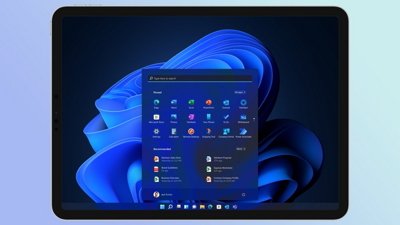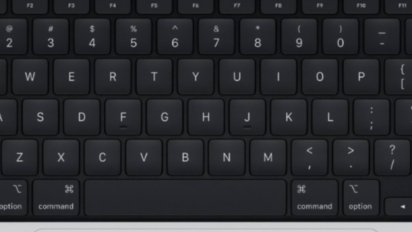VMware and Parallels, two software developers set to duel it out for a share of the Mac virtualization market, have recently released new betas of products that let users of Intel Macs run Microsoft's Windows operating system alongside Mac OS X.
Parallels Desktop is largely considered by Intel Mac users to be a more capable alternative to Apple's Boot Camp software because it does not require users to reboot their Macs in order to switch between operating system.
For its part, Apple has also openly praised the advantages offered by Parallels, plugging the software in versions of its "Get a Mac" television advertising campaign and carrying copies for sale at its international retail chain.
Though there has been ongoing industry discussion that Apple would eventually morph its Boot Camp software into its own virtualization solution that would rival Parallels, company executives have stated at least twice that it has no plans to do so.
The most recent comment on the matter came from Apple Chief Financial Officer Peter Oppenheimer, who recently reiterated in a sit-down meeting with Bear Stearns analyst Andy Neff that the company will not enter the embedded virtualization market.
"Apple indicated that it is very pleased with Parallels software and didn't feel the need to compete with its own version of embedded virtualization," Neff wrote in a note to his clients following the meeting.
Parallels Desktop Beta 2
In a public "Beta 2" release of Parallels Desktop this week, the Renton, Wash.-based software developer rolled out a plethora of new features that were previously detailed in a Dec. 1 AppleInsider report, including tight integration with Boot Camp partitions. The release also adds a new user interface, USB 2.0 support, an improved coherence mode and the ability to burn optical discs under Windows.
VMware joins the party with Fusion
At the same time, Parallels is bracing itself for some stiff competition from VMware, which on Friday released the first public beta of a competing virtualization product carrying the "Fusion" moniker.
"Fusion is the codename for a new VMware desktop product for Mac that will enable Intel-based Macs to run x86 operating systems, such as Windows and Linux, in virtual machines at the same time as Mac OS X," the company told testers in an email announcing the public beta program. "It is built on VMware's robust and advanced desktop virtualization platform that is used by over four million users today."
VMware said Fusion can run any of the over 360 virtual appliances available at its Virtual Appliance Marketplace. The pre-built and pre-configured applications come bundled with an operating system so they can run on any hardware or operating system, the company said. Some of the appliances featured on its marketplace are Astaro Security Gateway, B-hive Transaction Visibility Manager, Proofpoint Messaging Security Gateway, Loadbalancer, and SpamTitan.
Similar to Parallels Desktop, initial features of Fusion include USB 2.0 support, drag-and-drop of files and folders between Mac OS X and Windows, and support for all Intel Mac hardware — including the new 64-bit Mac Pro and iMac. However, Fusion offers a distinct capability in allowing users to designate multiple virtual processors in order to leverage the dual-core Core Duo chips available in the latest Intel Macs.
Where to get the goods
VMware's Fusion beta along with documentation (PDF) and an FAQ are available from the company's website. Similarly, information on the latest beta of Parallels Desktop is also available from the Parallels website.
 Prince McLean
Prince McLean






-m.jpg)






 William Gallagher
William Gallagher
 Andrew Orr
Andrew Orr
 Malcolm Owen
Malcolm Owen


 Wesley Hilliard
Wesley Hilliard






-m.jpg)




55 Comments
How come we never hear about products like CrossOver in AI articles?
http://www.codeweavers.com/products/
Perhaps it's because I'm not just the average user, but I would almost think this is bigger than BootCamp and/or any virtualization software.
I use Parallels but have been interested in upgrading to Beta 2. I had a hard time choosing between Boot Camp and Parallels but chose Parallels since I like running Windows side by side with OS X. The only downside is I have two games I'd like to play which won't work under Parallels and I have always wanted to install Boot Camp too but don't want to waste hard drive space on both so seems that issue has been fixed now that it is integrated with Boot Camp.
My question, since I already have Parallels does that mean I have to completely reinstall Parallels to make a Boot Camp windows partition or can I convert my current parallels virtual windows drive to boot camp?
I use Parallels but have been interested in upgrading to Beta 2. I had a hard time choosing between Boot Camp and Parallels but chose Parallels since I like running Windows side by side with OS X. The only downside is I have two games I'd like to play which won't work under Parallels and I have always wanted to install Boot Camp too but don't want to waste hard drive space on both so seems that issue has been fixed now that it is integrated with Boot Camp.
My question, since I already have Parallels does that mean I have to completely reinstall Parallels to make a Boot Camp windows partition or can I convert my current parallels virtual windows drive to boot camp?
I don't know how the current version works, but I was able to accomplish this simply by installing bootcamp'ed XP and telling parallels to use that directory as the system volume... basically having boot camp and parallels use the same directory for XP.
Shouldn't it be 'duel' not 'dual'?
AI needs a copy-editor staffed full-time.